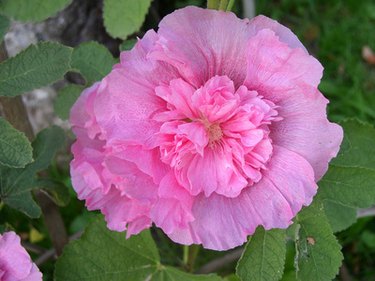
Most people plan their flower beds by color or season of bloom, but there's no reason you can't have an alphabetical garden. A wide variety of plants have either common or botanical names that start with the letter H.
Hibiscus
Video of the Day
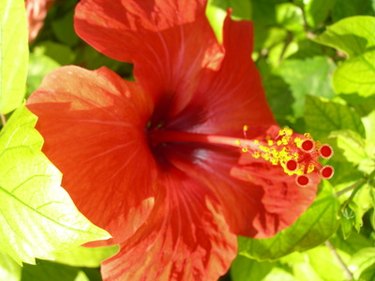
The rose mallow or perennial hibiscus (Hibiscus moscheutos) is a shrubby summer perennial with dinner-plate sized blossoms in red, pink or white. Native to wetlands and stream banks, it needs moist soil in full sun or partial shade. Hibiscus are cold hardy to U.S. Department of Agriculture Plant Hardiness Zone 4. Tropical hibiscus plants sold at florists and as summer container specimens are not hardy above Zone 9 and must be overwintered inside with other houseplants.
Video of the Day
Hellebores
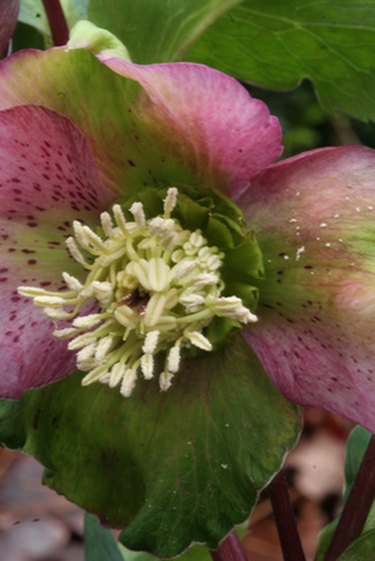
Hellebores (Helleborus), also called lenten roses, have semi-evergreen leathery leaves and nodding, cup-shaped flowers in late winter and early spring, often while snow is still on the ground. Grow them in woodland gardens or in shaded spots under trees. Most are hardy to Zone 5, although several varieties are hardy to Zone 3.
Hollyhocks
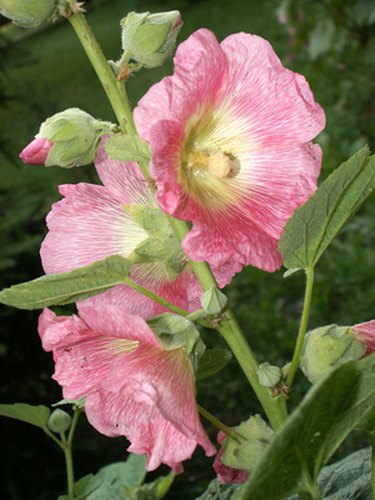
The undisputed star of old-fashioned cottage gardens, stately hollyhocks (Alcea) grow to 6 feet high or more. They are biennials that reseed themselves and come back reliably every year. Flowers can resemble single roses, or be giant frilly powder puffs. Grow them in a sheltered spot or stake them securely. Hollyhocks are hardy to Zone 5.
Heliopsis

Heliopsis (Heliopsis helianthoides) is a perennial sunflower, much smaller and more refined than the huge sunflowers grown in vegetable gardens. These natives like full sun and make excellent cut flowers for the house. Helopsis is hardy to Zone 3.
Hemerocallis
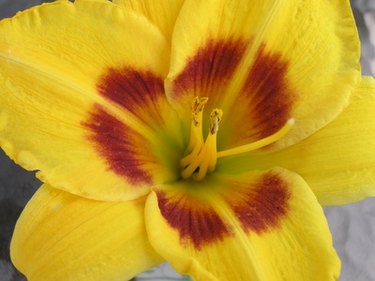
Daylilies (Hemerocallis) are pest free, adaptable to soil conditions, drought tolerant once established and long-lived. Daylilies combine well with almost any other plant but are especially suited to mixing with ornamental grasses. Size and color vary widely by cultivar, so read plant labels carefully. Most varieties of daylily are hardy to Zone 3.
Honeysuckle

Most people are familiar with the common Japanese honeysuckle that is such a pest in the eastern U.S., but the less well-known native trumpet honeysuckle (Lonicera sempervirens) is a terrific garden plant. It has long tubular flowers that entice hummingbirds to your garden. Flowers are red or yellow. Trumpet honeysuckle is hardy to Zone 3.
Heucherellas
Heucherellas are a cross between Heucheras (coral bells) and Tiarella (foam flowers). This cross has produced a plant with the best characteristics of both parents. They feature interesting mottled leaves and have fluffy flower heads for a long period in spring and early summer. H. 'Bridget Bloom' has delicate spikes of pink blooms and grows to 18 inches tall. Heucherellas are hardy to Zone 4.
Hostas
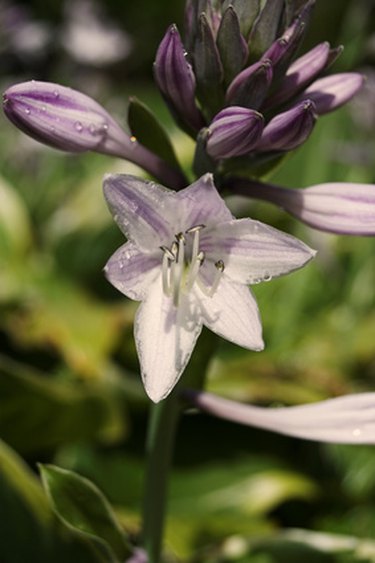
Gardeners plant hostas for their magnificent heart-shaped leaves, but when allowed to bloom they have spikes of nodding purple or white flowers that can be fragrant. Both leaves and flowers are used in flower arrangements. Hostas do best in filtered sunlight and rich, moist soil. Hostas are hardy to Zone 3.
Heliotrope
Heliotrope (Heliotropium arborescens) is an annual flower suited to sunny and party-shaded gardens. Don't let it dry out. Flowers are purple, blue or white, and smell like cherry pie. Heliotropes grow 18 to 24 inches high and should be spaced 12 inches apart. As annuals, they must be replanted yearly. Start from seeds or look for plants in your local garden center in the spring.